Neuroinfectious Disease
Neuroinfectious diseases encompass a broad category of infections affecting the nervous system, including the brain, spinal cord, and peripheral nerves. These infections can be caused by various pathogens, including bacteria, viruses, fungi, and parasites. Common examples of neuroinfectious diseases include viral encephalitis, bacterial meningitis, neurosyphilis, and cerebral toxoplasmosis. Viral encephalitis involves inflammation of the brain parenchyma and can be caused by herpesviruses, arboviruses, and other viruses. Bacterial meningitis, often caused by Neisseria meningitidis, Streptococcus pneumoniae, or Haemophilus influenzae, results in inflammation of the meninges surrounding the brain and spinal cord. Neurosyphilis is a complication of syphilis that can affect the central nervous system, leading to various neurological symptoms. Clinical manifestations of neuroinfectious diseases vary widely but may include fever, headache, altered mental status, seizures, and focal neurological deficits. Diagnosing these conditions often involves cerebrospinal fluid analysis, neuroimaging, and laboratory tests to identify the specific pathogen.

Francis J Castellino
University of Notre Dame, United States
Ranjan Ramasamy
ID-FISH Technology, United States
Saurabh Chattopadhyay
University of Kentucky College of Medicine, United States
Rico Leonardo Lizbinski
Northern Light Health, United States
Sasha Leibholz
New York Presbyterian Columbia/Cornell, United States
Lauren Gruffi
New York Presbyterian Columbia/Cornell, United States



Title : Changing population immunity to COVID-19 in the context of infection, vaccination, and emerging SARS-CoV-2 variants
Ranjan Ramasamy, ID-FISH Technology, United States
Title : Extensively drug-resistant bacterial infections: Confronting a global crisis with urgent solutions in prevention, surveillance, and treatment
Yazdan Mirzanejad, University of British Columbia, Canada
Title : Bioterrorism through the ages: Historical perspective, emerging threats, and medical countermeasures
Claudia Ferreira, Sorbonne University, France
Title : Measles vaccination coverage indicators in 2023 and advance towards measles elimination and eradication by 2030
Pedro Plans Rubio, College of Physicians of Barcelona, Spain
Title : Pathogen-derived noncanonical epitopes: Are they valuable targets for novel vaccinations and shall we be concerned about autoimmune responses?
Michele Mishto, Francis Crick Institute, United Kingdom
Title : Severe influenza and other related respiratory infection cases during Omicron era in Japan
Masafumi Seki, Saitama Medical University International Medical Center, Japan